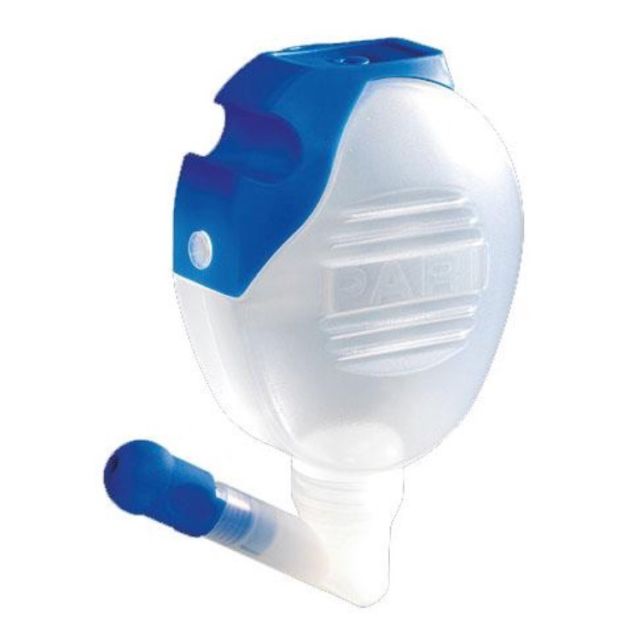Irrigation of the nasopharynx plays a significant role in the treatment of many pathologies of the maxillary sinuses and in postoperative care. A nasal shower optimizes the distribution and cleansing power of the irrigation solution in the nasal cavity. In this case, the ionic composition and Ph positively affect the health of the epithelium.
Description
A nasal shower is a device for washing the nose. It can be in the form of:
- a ceramic bottle with a plastic spout and handle;
- a plastic vessel;
- rubber syringes;
- spray can;
- ball syringe for babies;
- in the form of spray machines with an electric pump.
Benefit
The nasal douche provides mechanical cleaning of mucus, crusts, cell debris, various air pollution, allergens and pathogens. It can serve as an effective therapy for alleviating the symptoms of chronic and acute sinusitis caused by respiratory tract infections. Increases mucocilial clearance and reduces the time of contact of mucus with airborne elements.
This reduces local concentrations of anti-inflammatory mediators and moisturizes the nasal mucosa, especially in the postoperative period. Also, a nasal shower can be useful for temporarily relieving symptoms associated with allergic rhinitis.
Research
A recent meta-analysis of 10 controlled trials, taken from a review of 11,500 studies, included more than 400 patients with allergic rhinitis. Regular saline irrigation in adults and children improved nasal symptoms in 35% of cases and quality of life in 30%.
In 2007, experts investigated the effectiveness of the nasal shower in chronic rhinitis. Scientists have discovered significant superiority of this method.
In acute infection, two studies were conducted. The first observation of 390 patients showed a more rapid improvement in nasal permeability during irrigation with a nasal shower than in the control group without it. It was found that using this method reduces the number of ENT complications and the duration of drug treatment. The second study involved 69 patients with acute sinusitis. It was found that standard treatment more effectively reduced symptoms when using a nasal shower.
Composition
The main component for irrigation of the mucous membrane is seawater diluted by one third with distilled water (for example, the Paris Montesol nasal shower with a branded composition). There are also commercially available products consisting of electrodialyzed seawater. This solution retains a high concentration of basic seawater ions. This composition reduces local inflammation, enhances the secretion of the epithelium of the nose, stimulates the flow of calcium into the cells, restores the respiratory epithelium, reduces the viscosity of the mucus. An example is the Paris Montesol nasal douche filled with Sterimar solution.
To make a salt solution yourself, you need to mix half a teaspoon of sea salt with a glass of water. Do not use running or well water. It must be distilled or sterilized. In the absence of such, you can use tap water, which boiled for three minutes.
Application
For successful use of the nasal shower, the following rules must be observed:
- Before use, it is important to wash your hands thoroughly with soap and water.
- Position for flushing the nose. Adults and older children need to bend far above the sink with his head bowed. Young children need to be carefully held above the sink without pressing on the chest and abdomen.
- Flushing for adults and older children. It is necessary to bring the shower dispenser to each nostril in turn and flush according to the instructions for the device used.
- Ball Syringe Method. A special ear syringe is used, which can be purchased at any pharmacy. It must be filled with a solution, insert the tip of the syringe inside the nostrils, holding it around the syringe. Then, gently press the syringe reservoir. Repeat the procedure with the other nostril.
- For babies, special syringes are used. It is necessary to get the recommendations of the attending physician and undergo training before rinsing the baby's sinuses.
- With any technique, a salt water solution can get into your mouth and leave an unpleasant aftertaste. In this case, rinse your mouth immediately.

Examples
Currently, the following devices are available in pharmacies:
- Nasal shower "Montesol". It is a round plastic tank. Irrigation compound is poured into it. A cap with an elongated nose is screwed on top, on which the dispenser-sprayer is located. Irrigation with this device is convenient and safe.
- Nasal shower "Microlife". This device is of Italian origin. It is a plastic bottle on the neck of which a device for washing the nose is installed. It has an optimal speed and spray area. Does not create pain and discomfort. It makes it possible to adjust the dosage of the drug from 2 to 12 ml.
Portability and Security
Adults have minimal side effects. Such reactions as irritation of the mucous membranes, discomfort in the nose, and otalgia are described. They most often occur when using very large volumes of devices. In most cases, these symptoms are mild. You should also pay attention to the temperature of the solution. Too cold or hot may cause harm. Similar conclusions can be made regarding children. Although safety assessment is more complex, especially in the smallest patients.
Precautionary measures
To prevent bacterial growth, thoroughly clean the equipment used to flush the nose. It is important for each family member to have their own nasal shower. After each use, you must:
- put a small amount of dishwashing detergent in a container;
- add clean water;
- fix the vessel with a stopper;
- shake the contents;
- flush all the components of the shower (container, cap, tube, dispenser);
- shake off excess water;
- dry on a clean towel.
You can also carry out disinfection in the microwave for two minutes.